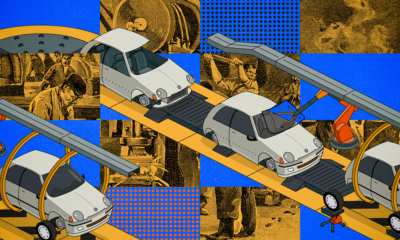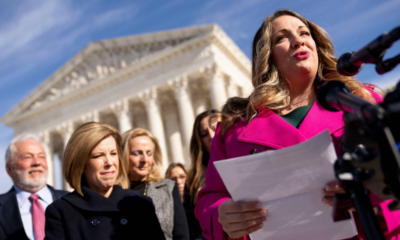Tech News
Inside the shadowy global battle to tame the world's most dangerous technology – POLITICO Europe
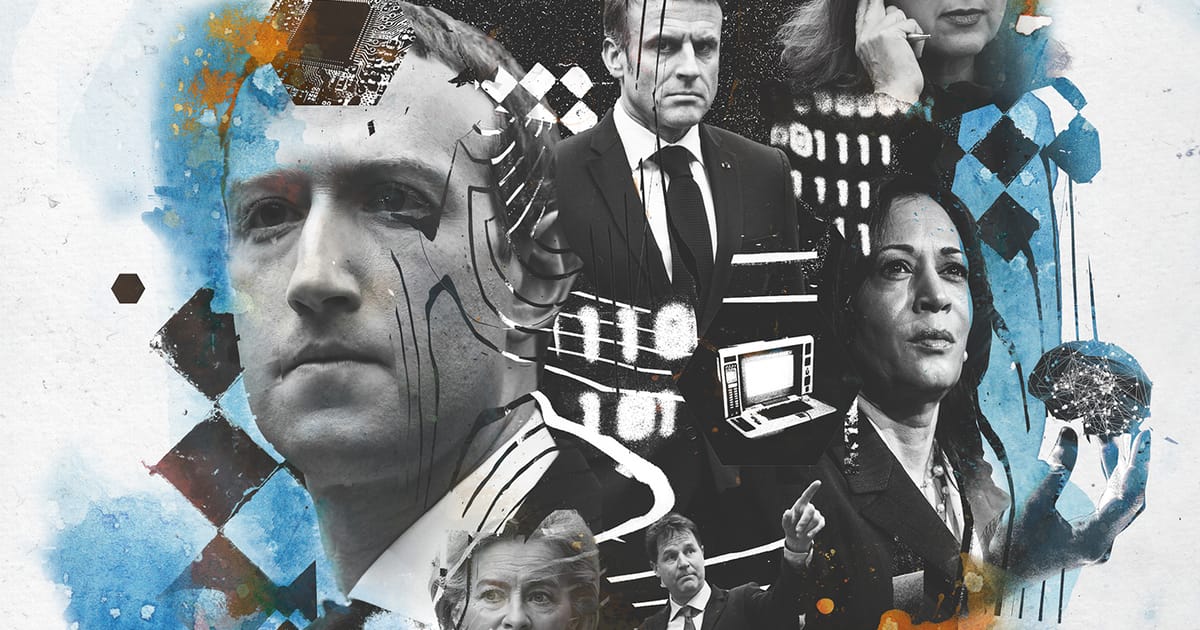
Can anyone control AI?
By Mark Scott,
Gian Volpicelli,
Mohar Chatterjee,
Vincent Manancourt,
Clothilde Goujard
and Brendan Bordelon
Photo-illustrations by Raphaël Vicenzi for POLITICO
On a wet November afternoon, U.S. Vice President Kamala Harris and Meta’s Nick Clegg trudged into a large tent in the grounds of a 19th century English country house north of London, took their seats at a circular table, and, among other things, set about trying to save humanity.
Amid the gloomy weather at Bletchley Park, which had been used as the Allied World War II code-breaking headquarters, Clegg and Harris joined an elite gathering of global leaders, academics and tech executives to tackle what pessimists fear is a devastating new threat facing the world: runaway artificial intelligence.
The politicians and tech executives agreed on a joint declaration of good intentions after two days of talks, but no unified answer on what should be done. Instead, they made rival pitches on how to manage a technology that will dominate much of the next decade — and will likely upend everything from business and health care to democracy itself.
Clegg, a former British deputy prime minister, argued that policing AI was akin to building a plane already in flight — inherently risky and difficult work. Harris trumpeted Washington’s efforts to address the dangers of AI through voluntary business agreements as the world’s gold standard. Ursula von der Leyen, the European Commission president, who was also in attendance, urged others to follow Brussels’ new, legally binding rulebook to crack down on the tech.
The debate represented a snapshot of a bigger truth. For the past year, a political fight has been raging around the world, mostly in the shadows, over how — and whether — to control AI. This new digital Great Game is a long way from over. Whoever wins will cement their dominance over Western rules for an era-defining technology. Once these rules are set, they will be almost impossible to rewrite.
For those watching the conversation firsthand, the haggling in the British rain was akin to 19th-century European powers carving up the world.
“It felt like an alternate reality,” said Amba Kak, head of the AI Now Institute, a nonprofit organization, who participated in the discussions. At the end of the meeting, 29 countries, including China, European Union members, and the United States, signed a voluntary agreement to reduce risks that have climbed the political agenda thanks to the arrival of OpenAI’s ChatGPT.
In the year ahead, the cut-throat battle to control the technology will create winners and losers. By the end of 2024, policymakers expect many new AI standards to have been finalized.
For this article, POLITICO spoke to more than three dozen politicians, policymakers, tech executives and others, many of whom were granted anonymity to discuss sensitive matters, to understand the dynamics at play as the world grapples with this new disruptive technology.
The question they face is whether the U.S., the EU or the United Kingdom — or anyone else — will be able to devise a plan that Western democracies can agree on. If liberal industrialized economies fail to reach a common regime among themselves, China may step in to set the global rulebook for a technology that — in a doomsday scenario — some fear has the potential to wipe humanity off the face of the Earth.
As Brussels and Washington pitch their conflicting plans for regulating AI, the chances of a deal look far from promising.
A month before the conference in the English rain, policymakers had been frantically trying to make progress on the other side of the world. It was October, and Věra Jourová stepped off her 16-hour flight from Brussels to Japan exhausted. The Czech politician was only a few weeks into her new role as the EU’s top tech envoy, and her first international assignment would not be easy.
Jourová’s mission was to sell Europe’s AI rulebook at a G7 meeting where Western leaders had gathered to try to design new global standards for the most advanced form of this technology, known as “generative AI,” the powerful development behind ChatGPT and rival tools.
Brussels’ approach is enshrined in the EU’s Artificial Intelligence Act, the world’s first attempt at binding legislation on the issue. Unlike the stance favored by the U.S., the EU’s vision includes bans on the most invasive forms of the technology and strict rules requiring companies like Google and Microsoft to be more open about how they design AI-based products.
“Generative AI invaded our lives so quickly and we need something fast,” Jourová told POLITICO after taking the two-hour bullet train from Tokyo to Kyoto for the summit.
At the three-day meeting in Japan, Nathaniel Fick had a rival pitch.
As Joe Biden’s top digital diplomat, Fick, a former tech executive, proposed no bans or strict requirements. Instead, he pushed for a lighter-touch regime based mostly on voluntary commitments from industry and existing domestic laws.
“People can expect the United States to weave in AI policy issues in everything we do,” Fick told POLITICO after the Kyoto summit concluded. “The frameworks, the codes, the principles we develop will become the basis for action.”
In dueling meetings with G7 policymakers, tech company executives and other influential figures, Jourová and Fick made their cases.
For the EU’s Jourová, the pitch was simple. Brussels had already marked itself out as the West’s digital police officer, with a flurry of regulations on everything from protecting consumers’ privacy to taming social media.
The summit timetable was packed, with little downtime beyond some snatched cigarette breaks and rushed lunches in the cafeteria. Jourová argued that only Europe could deliver the necessary rigor. The EU, she said, could hit companies with blockbuster fines and ban the most invasive forms of AI — such as social scoring, which are complex algorithms tracking people’s movements, infamously used in China.
“She came with a plan, and that was to convince us Europe’s rules were the only game in town,” said one of the people who met Jourová. Another official from a G7 country said Europe’s digital chief dismissed Washington’s alternative proposal for its lack of binding legislation.
Fick’s counteroffensive relied on America’s undisputed position as the world’s powerhouse of AI development.
A political stalemate on Capitol Hill means no comprehensive legislation from Washington is likely to come anytime soon. But the White House has already made a flurry of announcements. Last July, the Biden administration secured voluntary commitments from leading tech giants like Amazon to make AI safer. Then Biden issued an executive order, announced on Oct. 30, which empowered federal agencies to act.
Fick’s pitch included criticizing Brussels’ legislation for imposing too many regulatory burdens on businesses, compared to Washington’s willingness to allow companies to innovate, according to two individuals who met Fick in Japan.
“The message was clear,” said another Western diplomat who attended the Kyoto G7 summit. “Washington wasn’t going to let Brussels get its way.”
Back in Europe, efforts to reach a consensus were continuing — in some unlikely surroundings.
A lavish six-course dinner at the Elysée Palace, the French president’s 18th-century official residence in Paris, doesn’t exactly scream high-tech.
But over a five-hour meal of gourmet cuisine and fine wine in November, Emmanuel Macron held court with 40 industry experts, including OpenAI President Greg Brockman and Meta’s chief AI guru, Yann LeCun.
The dinner conversation quickly turned to rulemaking.
Macron is a global powerbroker. France has a large domestic AI industry and the president is personally eager to lead international efforts to set global rules for the technology. Unlike stereotypes of regulation-loving French politicians, Macron remains wary of Brussels’ AI Act, fearing it will hamstring firms like Mistral, an AI startup co-founded by Cedric O, France’s former digital minister.
As Macron listened carefully, his dinner guests laid out their rival proposals. The discussion exposed another key facet of the global AI debate: the clash between those who believe the gravest risks are still many years away, and those who think they are already here. This is the battle at the heart of the entire global debate. It pits those who take a more optimistic approach to AI’s potential, and want to allow as much experimentation as possible, against others who fear it is already too late to protect humanity from serious harm.
OpenAI’s Brockman, one of those who is relaxed about the immediate risks and thinks the focus should be on addressing longer-term threats, told the French president that AI was overwhelmingly a force for good, according to three people who attended the dinner. Any regulation — particularly rules that could hamper the company’s meteoric growth — should focus on long-term threats like AI eventually overriding human control, he added.
Others like Meredith Whittaker, an American technologist also present at the Paris dinner in November, argued that the real-world harms of existing AI — including faulty datasets that entrenched racial and gender biases — required politicians to act now.
“Macron took it all in,” said one of the attendees who, like others present, was granted anonymity to discuss the private meeting. “He wanted people to know France was behind greater regulation, but also that France was also open for business.”
Similar arguments — pitting the need for rules to focus on longer-term risks against an immediate, emergency crackdown — are now playing out across Western capitals.
While national leaders tried to wrap their heads around the problem, tech executives were criss-crossing the planet urging politicians not to over-regulate.
Eric Schmidt, Google’s former chief executive, and LinkedIn founder Reid Hoffman flew between Washington, London and Paris to offer their own take on how to handle AI, according to five individuals familiar with the discussions. An overzealous crackdown, the tech titans argued, would hand authoritarian China a decisive advantage in AI. Many like Schmidt and Hoffman have invested heavily in AI startups.
To reinforce their arguments, tech bosses who want lighter-touch regulation got personal. AI lobbyists showed at least two Western leaders life-like deepfake videos — of the leaders themselves. These AI-generated forgeries are still at the technology’s cutting edge and are often clunky and easy to spot. But the lobbyists used the deepfakes to show the leaders how the tech had the potential to evolve to pose serious risks in the future, according to three individuals briefed on those meetings.
Opponents claim such tactics allow companies like OpenAI and Alphabet to underplay how the technology is harming people right now — for example, by rejecting government benefits claims from minorities and underprivileged people in society.
“Most Americans don’t realize AI is already out there,” said Cory Booker, a Democratic U.S. senator. “I want to make sure that our current laws against discrimination … our current laws affirming protections, are actually being enforced.”
Heading into 2024, those who want a lighter touch appear to be winning, despite EU’s new binding rules on AI.
After Brussels reached a political deal in December on its AI Act, Macron — fresh from his personal AI dinner — sided with German Chancellor Olaf Scholz and Italian Prime Minister Giorgia Meloni to urge fewer controls on the latest forms of the technology. The French president worried such regulation would hamper local champions — including Mistral, the French AI company backed, in part, by Schmidt, Google’s ex-boss.
France remained a holdout until finally giving in to political pressure in early February to support the rules, albeit with major reservations. “We will regulate things that we will no longer produce or invent,” Macron told an audience in Toulouse after securing some last-minute carve-outs for European firms. “This is never a good idea.”
Tristan Harris thought he had landed a knockout punch.
In a private hearing between U.S. lawmakers and tech experts in September, Harris, a co-founder of the Center for Humane Technology, a nonprofit, described how his engineers had coerced Meta’s latest AI product into committing a terrifying act: the construction of a bioweapon.
This showed that Meta’s approach to artificial intelligence was far too lax and potentially dangerous, Harris argued, according to two officials who attended the meeting.
Mark Zuckerberg’s tech giant favored so-called open-source technology — AI easily accessible to all — with few safeguards against abuse. Such openness, Harris added, would lead to real-world harm, including the spread of AI-generated weapons of mass destruction.
His triumph didn’t last long. Zuckerberg, who was also present at the Capitol Hill hearing, quickly whipped out his phone and found the same bioweapon information via a simple Google search. Zuckerberg’s counterpunch led to a smattering of laughter from the room. It blunted Harris’ accusation that Meta’s open-source AI approach was a threat to humanity.
“It wasn’t the slam dunk Harris thought it would be,” said one of the officials granted anonymity to discuss the meeting.
The Harris-Zuckerberg showdown captures another key question for policymakers: Should AI be limited to a handful of trusted companies or opened up to all comers to exploit?
According to those who favor licensing advanced AI to a select few companies, the immediate risks are too stark to let loose on the wider world. A PowerPoint presentation warning that open-sourced AI models would unleash uncontrollable bioweapons accessible to terrorists has been presented in private to government officials in London, Paris and Washington, according to six policymakers involved in those meetings. POLITICO could not determine which organization was behind these dire predictions.
Microsoft and OpenAI are among the companies that favor restricting the technology to a small number of firms so regulators can build ties with AI innovators.
“A licensing-based approach is the right way forward,” Natasha Crampton, Microsoft’s chief responsible AI officer, told POLITICO. “It allows a close interaction between the developer of the tech and the regulator to really assess the risks.”
Critics of Silicon Valley’s dominance argue Big Tech has a vested interest in shutting out competition. According to open-source advocate Mark Surman, executive director of the Mozilla Foundation, the world’s largest tech companies want to capture the fledgling AI industry for themselves and cut off rival upstarts.
During the fall, Surman toured Western capitals to urge senior U.S., EU and U.K. officials not to limit who could develop next-generation AI models. Unlike other Silicon Valley giants, Zuckerberg’s Meta has sided with people like Surman who want to keep the technology open to all, a point he reinforced with his showdown with Harris over bioweapons in September.
The open approach is winning friends in powerful parts of Washington, although U.S. officials remain divided. In Brussels, policymakers agreed to free almost all open-source AI from the toughest oversight — as long as the technology is not used in outlawed practices, such as wholesale facial recognition. In the U.K., however, officials lean toward restricting the most advanced AI to a handful of countries.
“If we leave AI in the hands of the few, there aren’t enough eyes out there to scrutinize what they do with it,” said Surman.
If 2023 was the year AI lobbying burst into the political mainstream, 2024 will decide who wins.
Key decision dates are fast approaching. By the summer, parts of Europe’s AI Act will come into force. The White House’s rival AI executive order is already changing how federal agencies handle the technology. More reforms in Washington are expected by the year’s end.
Other countries like the U.K., Japan and Canada — as well as China — are making their own plans, which include greater oversight of the most advanced AI and efforts to get other countries to adopt their rules.
What’s clear, according to the dozens of AI experts who spoke to POLITICO, is that in 2024, the public’s desire for political action is unlikely to disappear. AI’s impact, especially in a year of mass elections from the U.S. and EU to the Philippines to India — is anything but certain.
“This business about AI’s loss of control is suddenly being taken seriously,” said Max Tegmark, president of the Future of Life Institute, a nonprofit that advocates for greater checks on AI. “People are realizing this isn’t a long-term thing anymore. It’s happening.”
Mark Scott reported from London, Brussels, Paris, Berlin and Washington; Clothilde Goujard from Kyoto, Japan, Vincent Manancourt from London, Gian Volpicelli from Brussels, Mohar Chatterjee and Brendan Bordelon from Washington.
CORRECTION: A previous version of this article misstated which firms favor restricting the technology to a small number of firms. They are Microsoft and OpenAI.
Tech News
Does technology help or hurt employment? | MIT News | Massachusetts Institute of Technology – MIT News
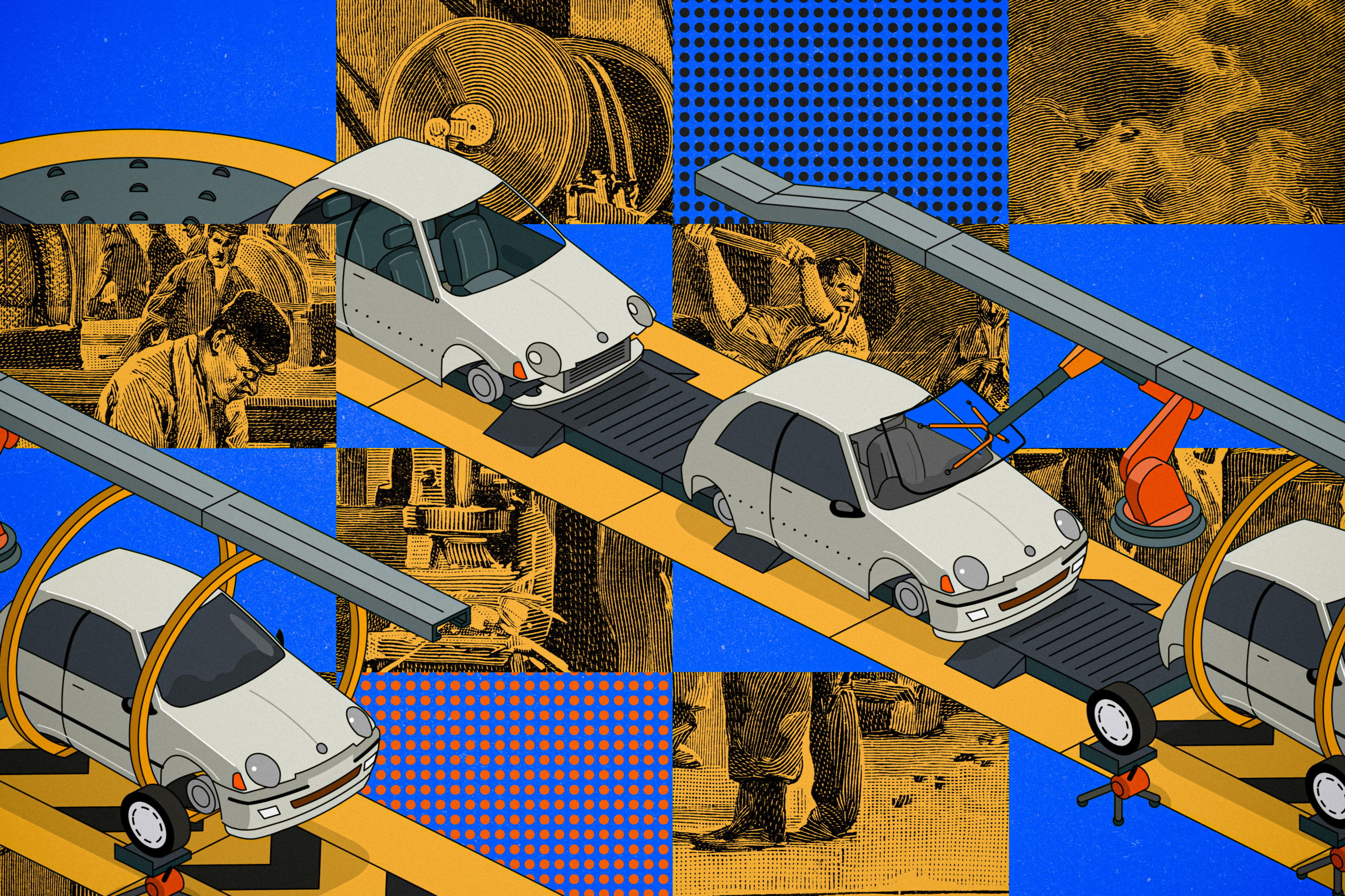
Suggestions or feedback?
Images for download on the MIT News office website are made available to non-commercial entities, press and the general public under a Creative Commons Attribution Non-Commercial No Derivatives license. You may not alter the images provided, other than to crop them to size. A credit line must be used when reproducing images; if one is not provided below, credit the images to “MIT.”
This is part 2 of a two-part MIT News feature examining new job creation in the U.S. since 1940, based on new research from Ford Professor of Economics David Autor. Part 1 is available here.
Ever since the Luddites were destroying machine looms, it has been obvious that new technologies can wipe out jobs. But technical innovations also create new jobs: Consider a computer programmer, or someone installing solar panels on a roof.
Overall, does technology replace more jobs than it creates? What is the net balance between these two things? Until now, that has not been measured. But a new research project led by MIT economist David Autor has developed an answer, at least for U.S. history since 1940.
The study uses new methods to examine how many jobs have been lost to machine automation, and how many have been generated through “augmentation,” in which technology creates new tasks. On net, the study finds, and particularly since 1980, technology has replaced more U.S. jobs than it has generated.
“There does appear to be a faster rate of automation, and a slower rate of augmentation, in the last four decades, from 1980 to the present, than in the four decades prior,” says Autor, co-author of a newly published paper detailing the results.
However, that finding is only one of the study’s advances. The researchers have also developed an entirely new method for studying the issue, based on an analysis of tens of thousands of U.S. census job categories in relation to a comprehensive look at the text of U.S. patents over the last century. That has allowed them, for the first time, to quantify the effects of technology over both job loss and job creation.
Previously, scholars had largely just been able to quantify job losses produced by new technologies, not job gains.
“I feel like a paleontologist who was looking for dinosaur bones that we thought must have existed, but had not been able to find until now,” Autor says. “I think this research breaks ground on things that we suspected were true, but we did not have direct proof of them before this study.”
The paper, “New Frontiers: The Origins and Content of New Work, 1940-2018,” appears in the Quarterly Journal of Economics. The co-authors are Autor, the Ford Professor of Economics; Caroline Chin, a PhD student in economics at MIT; Anna Salomons, a professor in the School of Economics at Utrecht University; and Bryan Seegmiller SM ’20, PhD ’22, an assistant professor at the Kellogg School of Northwestern University.
Automation versus augmentation
The study finds that overall, about 60 percent of jobs in the U.S. represent new types of work, which have been created since 1940. A century ago, that computer programmer may have been working on a farm.
To determine this, Autor and his colleagues combed through about 35,000 job categories listed in the U.S. Census Bureau reports, tracking how they emerge over time. They also used natural language processing tools to analyze the text of every U.S. patent filed since 1920. The research examined how words were “embedded” in the census and patent documents to unearth related passages of text. That allowed them to determine links between new technologies and their effects on employment.
“You can think of automation as a machine that takes a job’s inputs and does it for the worker,” Autor explains. “We think of augmentation as a technology that increases the variety of things that people can do, the quality of things people can do, or their productivity.”
From about 1940 through 1980, for instance, jobs like elevator operator and typesetter tended to get automated. But at the same time, more workers filled roles such as shipping and receiving clerks, buyers and department heads, and civil and aeronautical engineers, where technology created a need for more employees.
From 1980 through 2018, the ranks of cabinetmakers and machinists, among others, have been thinned by automation, while, for instance, industrial engineers, and operations and systems researchers and analysts, have enjoyed growth.
Ultimately, the research suggests that the negative effects of automation on employment were more than twice as great in the 1980-2018 period as in the 1940-1980 period. There was a more modest, and positive, change in the effect of augmentation on employment in 1980-2018, as compared to 1940-1980.
“There’s no law these things have to be one-for-one balanced, although there’s been no period where we haven’t also created new work,” Autor observes.
What will AI do?
The research also uncovers many nuances in this process, though, since automation and augmentation often occur within the same industries. It is not just that technology decimates the ranks of farmers while creating air traffic controllers. Within the same large manufacturing firm, for example, there may be fewer machinists but more systems analysts.
Relatedly, over the last 40 years, technological trends have exacerbated a gap in wages in the U.S., with highly educated professionals being more likely to work in new fields, which themselves are split between high-paying and lower-income jobs.
“The new work is bifurcated,” Autor says. “As old work has been erased in the middle, new work has grown on either side.”
As the research also shows, technology is not the only thing driving new work. Demographic shifts also lie behind growth in numerous sectors of the service industries. Intriguingly, the new research also suggests that large-scale consumer demand also drives technological innovation. Inventions are not just supplied by bright people thinking outside the box, but in response to clear societal needs.
The 80 years of data also suggest that future pathways for innovation, and the employment implications, are hard to forecast. Consider the possible uses of AI in workplaces.
“AI is really different,” Autor says. “It may substitute some high-skill expertise but may complement decision-making tasks. I think we’re in an era where we have this new tool and we don’t know what’s good for. New technologies have strengths and weaknesses and it takes a while to figure them out. GPS was invented for military purposes, and it took decades for it to be in smartphones.”
He adds: “We’re hoping our research approach gives us the ability to say more about that going forward.”
As Autor recognizes, there is room for the research team’s methods to be further refined. For now, he believes the research open up new ground for study.
“The missing link was documenting and quantifying how much technology augments people’s jobs,” Autor says. “All the prior measures just showed automation and its effects on displacing workers. We were amazed we could identify, classify, and quantify augmentation. So that itself, to me, is pretty foundational.”
Support for the research was provided, in part, by The Carnegie Corporation; Google; Instituut Gak; the MIT Work of the Future Task Force; Schmidt Futures; the Smith Richardson Foundation; and the Washington Center for Equitable Growth.
Fast Company reporter Shalene Gupta spotlights new research by Prof. David Autor that finds “about 60% of jobs in 2018 did not exist 1940. Since 1940, the bulk of new jobs has shifted from middle-class production and clerical jobs to high-paid professional jobs and low-paid service jobs.” Additionally, the researchers uncovered evidence that “automation eroded twice as many jobs from 1980 to 2018 as it had from 1940 to 1980. While augmentation did add some jobs to the economy, it was not as many as the ones lost by automation.”
Read full story →
Read full story →
Read full story →
Read full story →
Read full story →
Read full story →
This website is managed by the MIT News Office, part of the Institute Office of Communications.
Massachusetts Institute of Technology
77 Massachusetts Avenue, Cambridge, MA, USA
Tech News
Reaction to Supreme Court decision in web design case – Spectrum News NY1
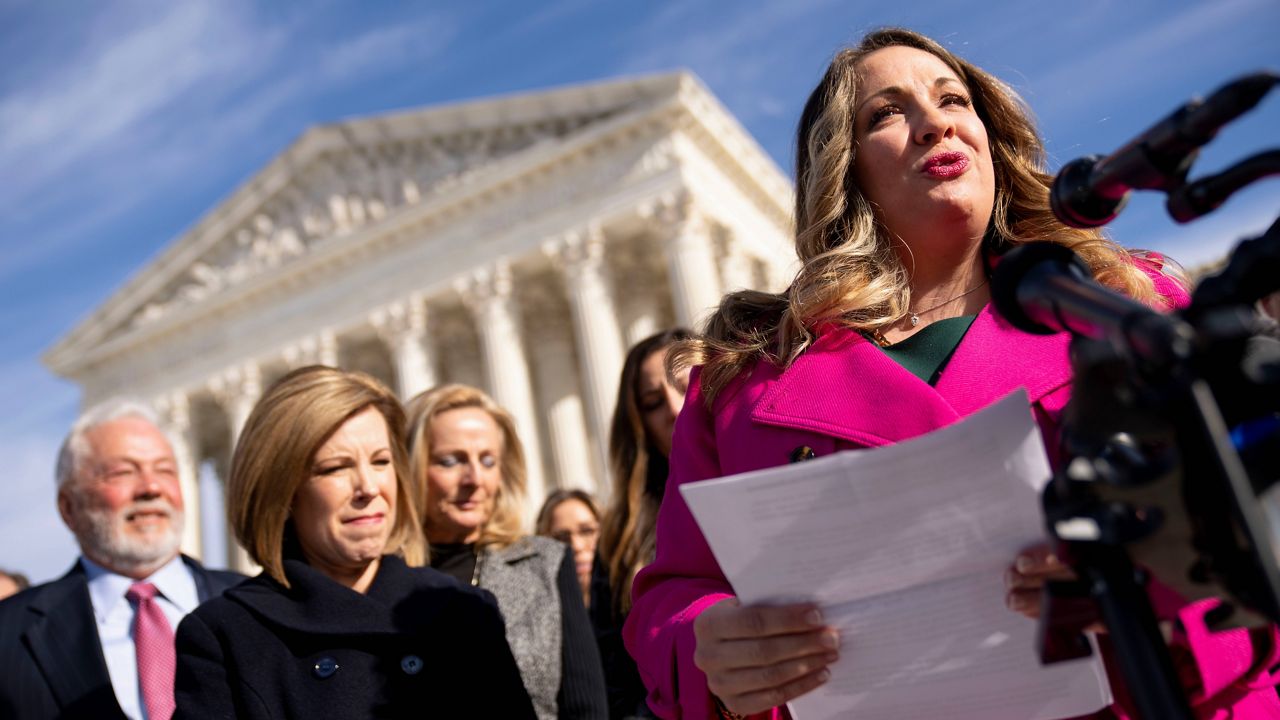
Get the best experience and stay connected to your community with our Spectrum News app. Learn More
Continue in Browser
Get hyperlocal forecasts, radar and weather alerts.
Please enter a valid zipcode.
Save
Democrats and LGBTQ+ advocates on Friday condemned a Supreme Court decision siding with a Colorado web designer who argued she should be able to refuse to build wedding websites for same-sex couples. Republicans, meanwhile, praised the ruling as a victory for religious freedom.
In a 6-3 decision, the court ruled that a Colorado law that forbids businesses open to the public from discriminating against gay people violated web designer Lorie Smith’s free-speech rights. Smith, who owns the graphic design firm 303 Creative, argued that working with same-sex couples would go against her Christian faith.
President Joe Biden called the ruling “disappointing” because he said it undermines that “no person should face discrimination simply because of who they are or who they love.”
While the decision only applies to businesses that perform creative services, Biden said he fears it could “invite more discrimination against LGBTQI+ Americans.”
The president added that his administration remains committed to working with federal law enforcement to protect Americans from discrimination based on gender identity or sexual orientation and will work with states to combat attempts to roll back civil rights protections.
“When one group’s dignity and equality are threatened, the promise of our democracy is threatened and we all suffer,” Biden said.
Senate Majority Leader Chuck Schumer, D-N.Y., called the ruling “a giant step backward for human rights and equal protection in the United States.”
“Refusing service based on whom someone loves is just as bigoted and hateful as refusing service because of race or religion,” he said in a statement. “And this is bigotry that the vast majority of Americans find completely unacceptable.”
Kelley Robinson, president of the Human Rights Campaign, an LGBTQ+ advocacy group, called the decision “dangerous” because it will give “some businesses the power to discriminate against people simply because of who we are.”
“People deserve to have commercial spaces that are safe and welcoming,” she said. “This decision continues to affirm how radical and out-of-touch this Court is.”
Rep. Robert Garcia, D-Calif., who is openly gay, called it “a very dark day for our community.”
“This is a devastating ruling for the LGBTQ+ community,” he said in an interview with MSNBC. “We just spent a month celebrating, trying to uplift pride. It’s already a very dark time for this community, where you have attacks happening on our community every day in Congress, in state legislatures. And to have this happen by a true extreme activist court to roll back a key protection against discriminating our community is shameful.
Rep. Bonnie Watson Coleman, D-N.J., also attacked the conservative-majority court while noting the case involved a hypothetical situation. Smith has never designed wedding websites. She argued she wants to expand her business but was concerned about running afoul of the Colorado law.
“This SCOTUS is out of control,” Coleman tweeted. “It’s now taking made up cases in order to push a radical agenda that is out of touch with the vast majority of the American people.”
Rep. Ayanna Pressley, D-Mass., meanwhile, directed a supportive tweet toward the LGBTQ community.
“Despite yet another callous ruling from this extreme Supreme Court, I want our LGBTQ siblings to know: We see you. We love you. We won’t stop fighting for you,” she wrote.
But Kristen Waggoner, president and CEO of the Alliance Defending Freedom, a conservative Christian legal advocacy group, said in a statement the Supreme Court made the right decision. ADF attorneys, including Waggoner, represented Smith in the case.
“The U.S. Supreme Court rightly reaffirmed that the government can’t force Americans to say things they don’t believe,” Waggoner said. “The court reiterated that it’s unconstitutional for the state to eliminate from the public square ideas it dislikes, including the belief that marriage is the union of husband and wife.
“Disagreement isn’t discrimination, and the government can’t mislabel speech as discrimination to censor it,” she added.
Sen. Ted Cruz, R-Texas, said laws should not compel business owners to use their speech in ways that contradict their faith.
“This law wasn’t just a threat to Christians either,” Cruz said in a statement. “Should a Muslim artist be compelled by the government to draw the image of Muhammed? Should Jewish artists be forced to create art that is antisemitic?”
On Twitter, Sen. Lindsey Graham, R-S.C., added, “Participating in commerce does not mean you should have to abandon your faith and individuals should not be compelled, by government, to act counter to their faith.”
Former Vice President Mike Pence, who is running for the Republican presidential nomination in 2024, said in a tweet, “Today Faith Won!”
“Freedom of Religion is the bedrock of our Constitution,” he wrote. “Today’s decision by the Supreme Court is a victory for the Religious Liberty of every American of every faith to live, work and worship according to their faith and conscience!
And former Ambassador to the United Nations Nikki Haley, a Republican who is also running for president, said she’s “glad we have a Supreme Court that respects our Constitution.”
“Unlike in other countries, we don’t force our citizens to express themselves in ways that conflict with their religious beliefs. It’s called the First Amendment,” Haley said in a statement.
Tech News
The man named in the Supreme Court's gay rights ruling says he didn't request a wedding website – The Associated Press

Copyright 2024 The Associated Press. All Rights Reserved.
FILE – Lorie Smith, a Christian graphic artist and website designer in Colorado, appears outside the Supreme Court in Washington, Monday, Dec. 5, 2022, after her case was heard by the Court. In a defeat for gay rights, the Supreme Court’s conservative majority ruled Friday, June 30, 2023, Smith who wants to design wedding websites can refuse to work with same-sex couples (AP Photo/Andrew Harnik, File)
FILE – Lorie Smith, a Christian graphic artist and website designer in Colorado, right, accompanied by her lawyer, Kristen Waggoner of the Alliance Defending Freedom, second from left, speaks outside the Supreme Court in Washington, Monday, Dec. 5, 2022, after her case was heard before the Supreme Court. In a defeat for gay rights, the Supreme Court’s conservative majority ruled Friday, June 30, 2023, Smith who wants to design wedding websites can refuse to work with same-sex couples. (AP Photo/Andrew Harnik, File)
FILE – Lorie Smith, a Christian graphic artist and website designer in Colorado, speaks to supporters outside the Supreme Court in Washington, Monday, Dec. 5, 2022, after having her case heard by the Court. The Supreme Court’s conservative majority has ruled a Christian graphic artist who wants to design wedding websites can refuse to work with same-sex couples. The decision is a defeat for gay rights. The court ruled 6-3 on Friday, June 30, 2023, for designer Lorie Smith despite a Colorado law barring discrimination based on sexual orientation, race, gender and other characteristics. (AP Photo/Andrew Harnik, File)
FILE – Web designer Lorie Smith is shown in her office on Nov. 7, 2022, in the southwest part of Littleton, Colo. The Supreme Court’s conservative majority has ruled a Christian graphic artist who wants to design wedding websites can refuse to work with same-sex couples. The decision is a defeat for gay rights. The court ruled 6-3 on Friday, June 30, 2023, for designer Lorie Smith despite a Colorado law barring discrimination based on sexual orientation, race, gender and other characteristics. (AP Photo/David Zalubowski, File)
FILE – Lorie Smith, a Christian graphic artist and website designer in Colorado, appears outside the Supreme Court in Washington, Monday, Dec. 5, 2022, after her case was heard by the Court. In a defeat for gay rights, the Supreme Court’s conservative majority ruled Friday, June 30, 2023, Smith who wants to design wedding websites can refuse to work with same-sex couples (AP Photo/Andrew Harnik, File)
FILE – Lorie Smith, a Christian graphic artist and website designer in Colorado, appears outside the Supreme Court in Washington, Monday, Dec. 5, 2022, after her case was heard by the Court. In a defeat for gay rights, the Supreme Court’s conservative majority ruled Friday, June 30, 2023, Smith who wants to design wedding websites can refuse to work with same-sex couples (AP Photo/Andrew Harnik, File)
FILE – Lorie Smith, a Christian graphic artist and website designer in Colorado, right, accompanied by her lawyer, Kristen Waggoner of the Alliance Defending Freedom, second from left, speaks outside the Supreme Court in Washington, Monday, Dec. 5, 2022, after her case was heard before the Supreme Court. In a defeat for gay rights, the Supreme Court’s conservative majority ruled Friday, June 30, 2023, Smith who wants to design wedding websites can refuse to work with same-sex couples. (AP Photo/Andrew Harnik, File)
FILE – Lorie Smith, a Christian graphic artist and website designer in Colorado, right, accompanied by her lawyer, Kristen Waggoner of the Alliance Defending Freedom, second from left, speaks outside the Supreme Court in Washington, Monday, Dec. 5, 2022, after her case was heard before the Supreme Court. In a defeat for gay rights, the Supreme Court’s conservative majority ruled Friday, June 30, 2023, Smith who wants to design wedding websites can refuse to work with same-sex couples. (AP Photo/Andrew Harnik, File)
FILE – Lorie Smith, a Christian graphic artist and website designer in Colorado, speaks to supporters outside the Supreme Court in Washington, Monday, Dec. 5, 2022, after having her case heard by the Court. The Supreme Court’s conservative majority has ruled a Christian graphic artist who wants to design wedding websites can refuse to work with same-sex couples. The decision is a defeat for gay rights. The court ruled 6-3 on Friday, June 30, 2023, for designer Lorie Smith despite a Colorado law barring discrimination based on sexual orientation, race, gender and other characteristics. (AP Photo/Andrew Harnik, File)
FILE – Lorie Smith, a Christian graphic artist and website designer in Colorado, speaks to supporters outside the Supreme Court in Washington, Monday, Dec. 5, 2022, after having her case heard by the Court. The Supreme Court’s conservative majority has ruled a Christian graphic artist who wants to design wedding websites can refuse to work with same-sex couples. The decision is a defeat for gay rights. The court ruled 6-3 on Friday, June 30, 2023, for designer Lorie Smith despite a Colorado law barring discrimination based on sexual orientation, race, gender and other characteristics. (AP Photo/Andrew Harnik, File)
FILE – Web designer Lorie Smith is shown in her office on Nov. 7, 2022, in the southwest part of Littleton, Colo. The Supreme Court’s conservative majority has ruled a Christian graphic artist who wants to design wedding websites can refuse to work with same-sex couples. The decision is a defeat for gay rights. The court ruled 6-3 on Friday, June 30, 2023, for designer Lorie Smith despite a Colorado law barring discrimination based on sexual orientation, race, gender and other characteristics. (AP Photo/David Zalubowski, File)
FILE – Web designer Lorie Smith is shown in her office on Nov. 7, 2022, in the southwest part of Littleton, Colo. The Supreme Court’s conservative majority has ruled a Christian graphic artist who wants to design wedding websites can refuse to work with same-sex couples. The decision is a defeat for gay rights. The court ruled 6-3 on Friday, June 30, 2023, for designer Lorie Smith despite a Colorado law barring discrimination based on sexual orientation, race, gender and other characteristics. (AP Photo/David Zalubowski, File)
DENVER (AP) — A Colorado web designer who the U.S. Supreme Court ruled Friday could refuse to make wedding websites for gay couples cited a request from a man who says he never asked to work with her.
The request in dispute, from a person identified as “Stewart,” wasn’t the basis for the federal lawsuit filed preemptively seven years ago by web designer Lorie Smith, before she started making wedding websites. But as the case advanced, it was referenced by her attorneys when lawyers for the state of Colorado pressed Smith on whether she had sufficient grounds to sue.
The revelation distracts from Smith’s victory at a time when she might have been basking in her win, which is widely considered a setback for gay rights.
Smith named Stewart — and included a website service request from him, listing his phone number and email address in 2017 court documents. But Stewart told The Associated Press he never submitted the request and didn’t know his name was invoked in the lawsuit until he was contacted this week by a reporter from The New Republic, which first reported his denial.
“I was incredibly surprised given the fact that I’ve been happily married to a woman for the last 15 years,” said Stewart, who declined to give his last name for fear of harassment and threats. His contact information, but not his last name, were listed in court documents.
He added that he was a designer and “could design my own website if I need to” — and was concerned no one had checked into the validity of the request cited by Smith until recently.
Smith’s lawyer, Kristen Waggoner, said at a Friday news conference that the wedding request naming Stewart was submitted through Smith’s website and denied it was fabricated.
She suggested it could have been a troll making the request, something that’s happened with other clients she has represented. In 2018 her client Colorado baker Jack Phillips won a partial U.S. Supreme Court victory after refusing to make a gay couple’s wedding cake, citing his Christian faith.
“It’s undisputed that the request was received,” Waggoner said. “Whether that was a troll and not a genuine request, or it was someone who was looking for that, is really irrelevant to the case.”
Colorado Attorney General Phil Weiser on Friday called the lawsuit a “made up case” because Smith wasn’t offering wedding website services when the suit was filed.
Weiser didn’t know the specifics of Stewart’s denial, but said the nation’s high court should not have addressed the lawsuit’s merits “without any basis in reality.”
About a month after the case was filed in federal court challenging an anti-discrimination law in Colorado, lawyers for the state said Smith had not been harmed by the law as they moved to dismiss the case.
Her lawyers maintained Smith did not have to be punished for violating the law before challenging it. In February 2017 they said even though she did not need a request in order to pursue the case, she had received one.
“Any claim that Lorie will never receive a request to create a custom website celebrating a same-sex ceremony is no longer legitimate because Lorie has received such a request,” they said.
Smith’s Supreme Court filings briefly mentioned she received at least one request to create a website celebrating the wedding of a same-sex couple. There did not appear to be any reference to the issue in the court’s decision.
Associated Press researcher Rhonda Shafner contributed to this report from New York.
Copyright 2024 The Associated Press. All Rights Reserved.
-

 General Knowledge2 years ago
General Knowledge2 years agoList of Indian States and Capital
-

 General Knowledge2 years ago
General Knowledge2 years agoList Of 400 Famous Books and Authors
-
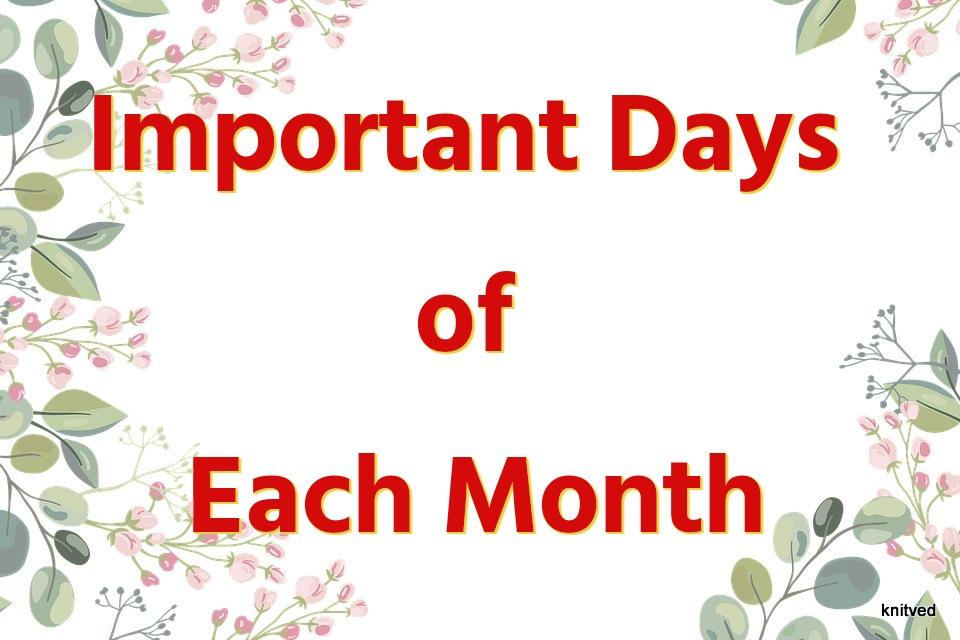
 Important Days4 years ago
Important Days4 years agoImportant Days of Each Month
-
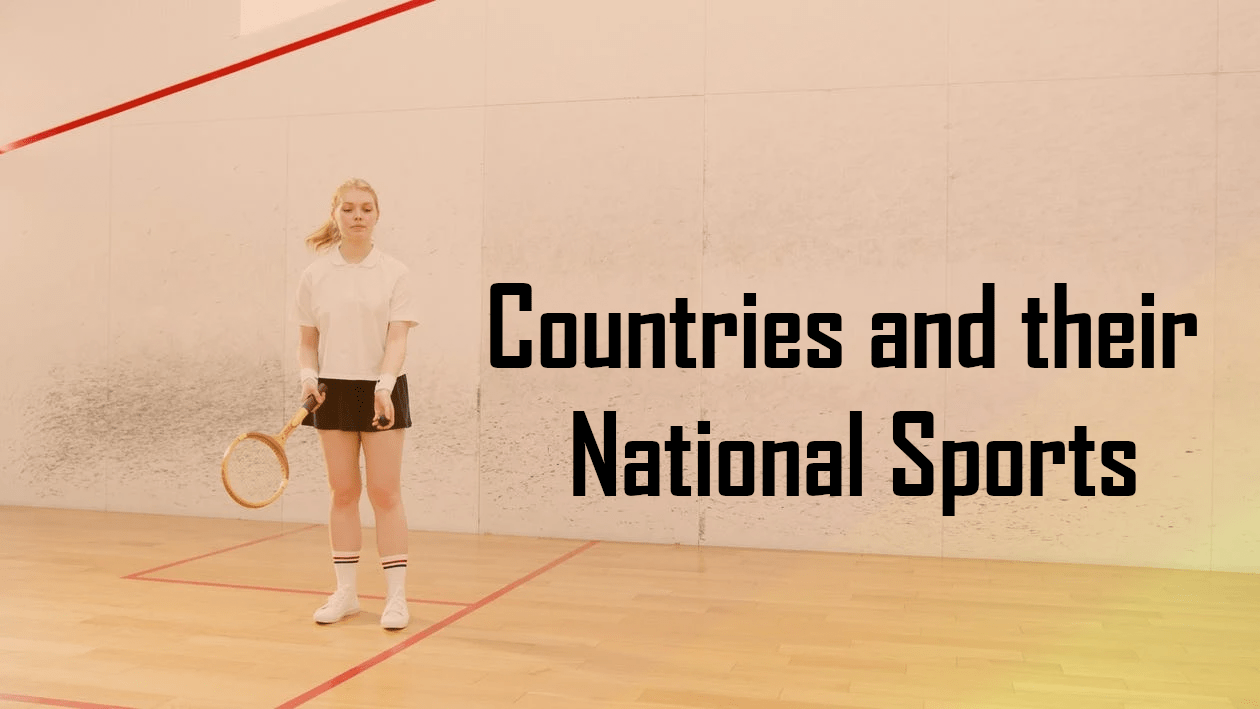
 General Knowledge2 years ago
General Knowledge2 years agoCountries and their National Sports
-

 General Knowledge3 years ago
General Knowledge3 years agoCountry Capital and Currency
-

 Important Days3 years ago
Important Days3 years agoHoli
-
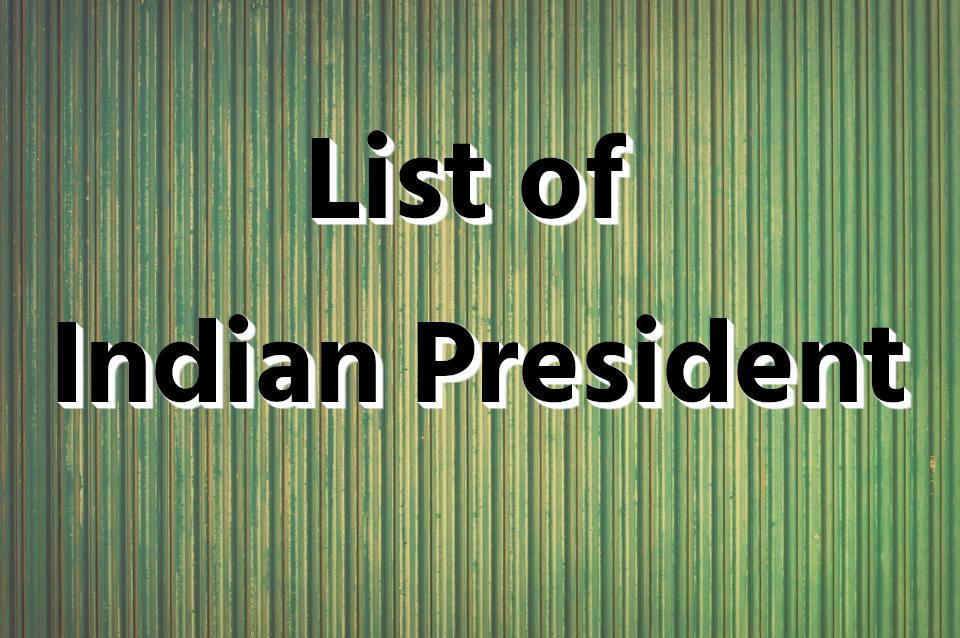
 General Knowledge2 years ago
General Knowledge2 years agoList of Indian President
-
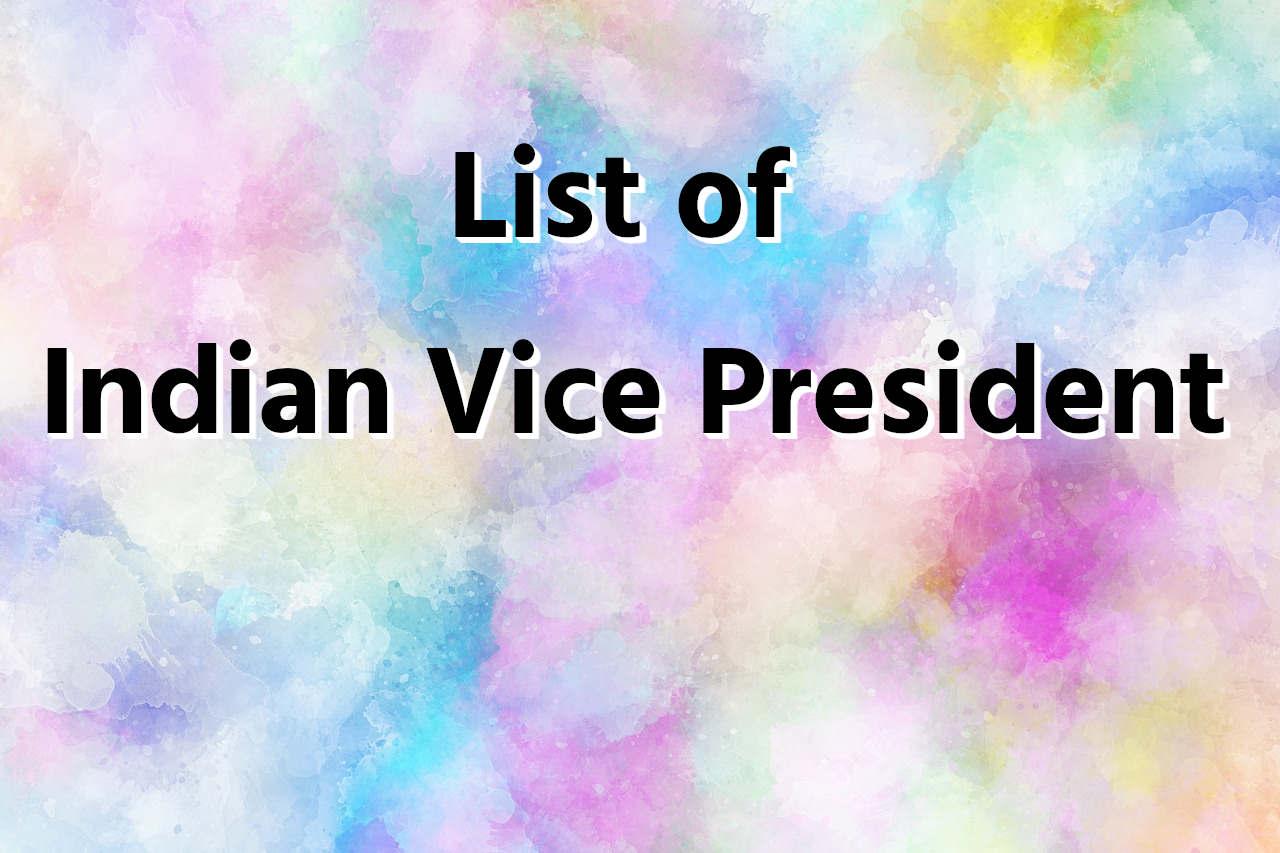
 General Knowledge2 years ago
General Knowledge2 years agoList of Indian Vice President


